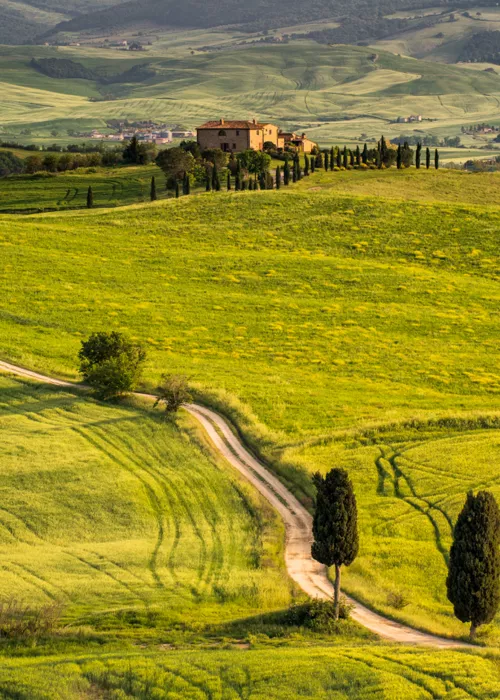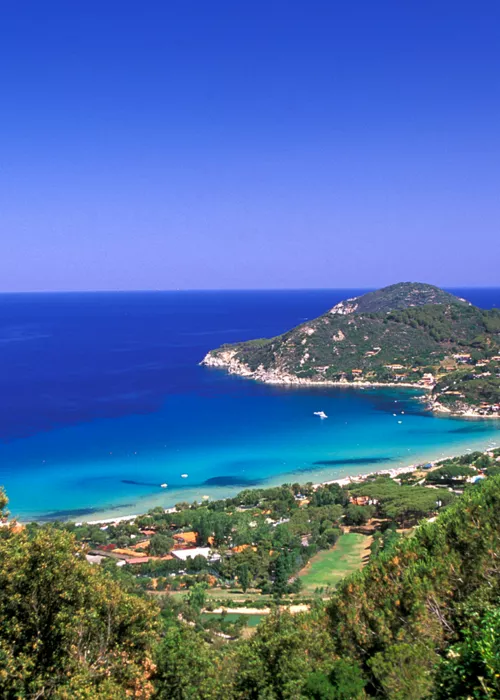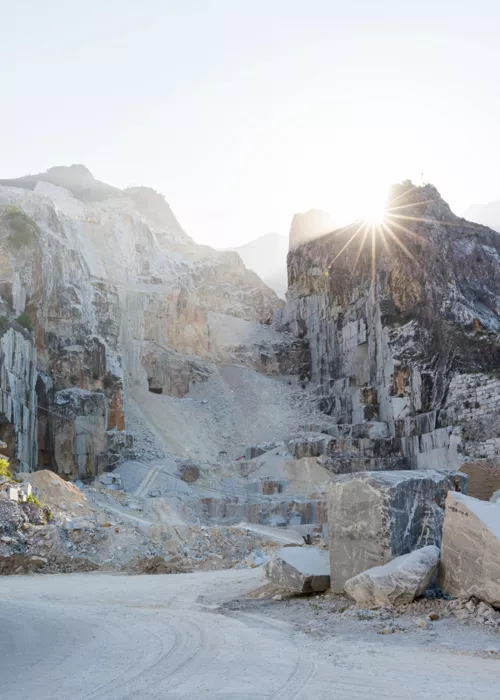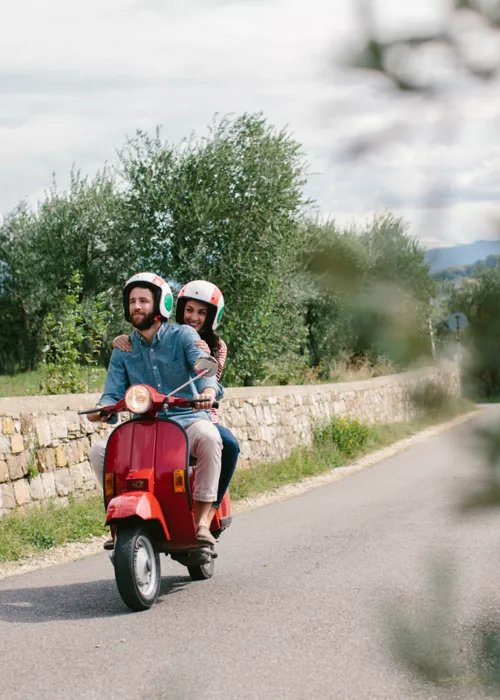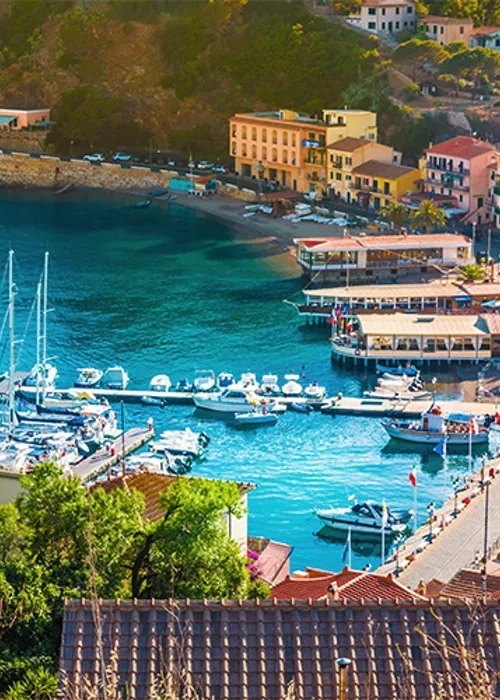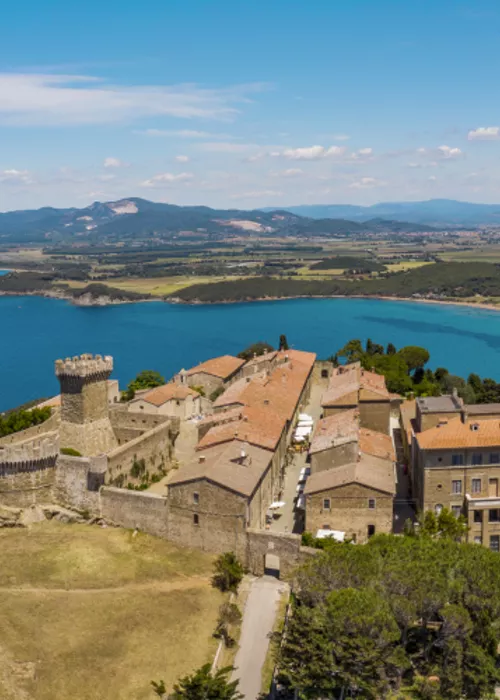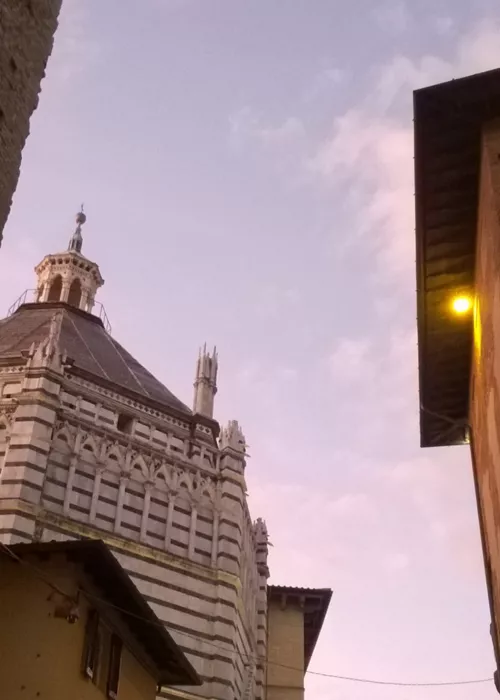From the Tuscan coast to the hinterland: first stop Rosignano Marittimo

Sailing along the Etruscan Route, we arrive at Cala de Medici in Rosignano, one of the most modern ports on the entire Tuscan coast. The structure, with 650 berths from 8 to 36 metres, is located in a suggestive stretch of the Tuscan coast between Rosignano and Castiglioncello, in the heart of the Etruscan Coast. In addition to the port services, we find a commercial village able to offer a wide range of shops and services. Here you can hire electric bicycles and rubber dinghies and get in touch with car rental services. By car, we will head east, entering the Tuscan hinterland and gradually leaving the sea behind. Our journey begins with a visit to Rosignano Marittimo, a charming medieval village perched on a picturesque hill, which can be reached in just 10 minutes. This charming village welcomes you with its medieval castle, witness to centuries of history and culture. Take a break to explore the ancient walls and immerse yourself in the timeless atmosphere of this place. From the top of the hill you can enjoy a breathtaking view of the Tuscan coast, where the sea meets the horizon in a natural spectacle of rare beauty.
Among the Tuscan hills towards the medieval village of Chianni

From Rosignano Marittimo, head east along the SP33, a panoramic road that crosses the hills of the Tuscan coast, with the Tyrrhenian Sea in the background. The destination of this stage is the medieval village of Chianni, about 30 km away, but along the way we can stop to visit Castellina Marittima, a characteristic hilltop village. The village, of medieval origin, is famous for its panoramic position and for the extraction of alabaster. We can stroll through the historic centre, visit the church of San Giovanni Battista and enjoy the breathtaking view of the surrounding countryside and, in the distance, the sea. To reach Chianni, we take the SP13 and then the SP48, in a landscape characterised by gentle hills covered with olive groves and vineyards. The road winds its way through panoramic bends, offering uninterrupted views of the Tuscan countryside. Chianni is a charming medieval village nestled in the woods. Here we can admire the church of San Donato with its 14th century bell tower and stroll through the narrow streets of the historic centre. This village is also famous for its wild boar festival in November, a testimony to the rich local gastronomic tradition.
The evocative Volterra, the ancient Etruscan city

We leave Chianni in the direction of Volterra. We travel along the SP48, the SP42 and then the SP45. The landscape becomes increasingly rugged and wild, with oak and chestnut woods alternating with cultivated fields. About 15km from Chianni, we can decide to make a short stop at Lajatico, for its panoramic beauty. This small village is famous for being the birthplace of the tenor Andrea Bocelli. The main attraction is the Teatro del Silenzio, a natural amphitheatre set in the beautiful countryside where a concert is held every year. Continue along the SP45, then the SP439 and finally the SP15 to Volterra. In this last stretch of about 20 kilometres, the landscape changes again and you will come across the characteristic Volterra cliffs. These geological formations, created by erosion, offer a particularly evocative, almost lunar panorama. Orange flag of the Italian Touring Club, the ancient Etruscan city of Velathri stands today on a hill threatened by the Balze ravine. Between the 5th and 4th centuries B.C. the town experienced an exceptional period, well documented by the collection kept in the Guarnacci Museum. There are many jewels to visit, starting with Piazza dei Priori: the heart of the town, dominated by the majestic Palazzo dei Priori, one of the oldest town halls in Tuscany. We continue with the Porta all'Arco, an ancient Etruscan gate dating back to the 3rd century BC, symbol of the city, and the Duomo di Santa Maria Assunta, a Romanesque cathedral with precious Renaissance interiors. Just outside the walls is the Roman Theatre, dating back to the 1st century BC. This ancient theatre is one of the finest examples of Roman architecture in Italy and offers a fascinating insight into the public and cultural life of the past. Continuing our journey, we come to the Archaeological Park "Enrico Fiumi", an enchanting place where the Etruscan and Roman history of Volterra comes to life. Walking among the archaeological remains you can imagine the life of an ancient city that was an important political and commercial centre. For art lovers, the Pinacoteca e Museo Civico offers a collection of medieval and Renaissance works that reflect the cultural richness of the city. Here you can admire masterpieces by Tuscan artists who have left an indelible mark on the history of art. Finally, a visit to the Ecomuseum of Alabaster is a must. This museum celebrates one of the most precious resources of the city and its artisans: alabaster. The elegant creations in alabaster are a testimony to the craftsmanship that has been handed down for generations, making Volterra a centre of artistic excellence. Not to be missed is the rich local food and wine offer, from zuppa alla volterrana to Pecorino delle Balze Volterrane DOP. In the village itself or in the surrounding area you will find excellent accommodation for your overnight stay.
Bolgheri, with its famous Viale dei Cipressi and its excellent wines

The final stage of our itinerary takes us south-west towards Saline di Volterra. Along the SS68 panoramic road, you will initially be able to admire the famous Volterra cliffs, which create an almost lunar panorama. As you leave Volterra, the landscape becomes more gentle, with rolling hills covered in cultivated fields and olive groves. As we approach the Saline di Volterra, we can stop to visit the Salt Museum and learn about the thousand-year history of salt production in this area. The landscape here is characterised by industrial structures linked to salt production, which form an interesting contrast with the surrounding natural environment. The route continues through Ponteginori and Casino di Terra, a small village that can be an excellent stopover. From Casino di Terra, head south-west towards Bibbona : here the hills become less steep and the vineyards begin to appear. After about 15km you enter Bibbona and head towards Bolgheri. As we get closer to the coast, the terrain becomes flatter. The last 5km are the most picturesque of the route.
Viale dei Cipressi, lined with tall, centuries-old cypresses, is an emblematic image of Tuscany. Along the roadside are the famous vineyards of Bolgheri, where some of Italy's most famous wines are produced. This ancient village, built around a medieval castle, with its cobbled streets and ancient stone buildings, is bustling with artisan workshops, wine shops, taverns and restaurants. The area is renowned for the absolute excellence of its wine production. Among the most famous are Bolgheri DOC, Ornellaia and Masseto. Before concluding our journey, we will take a break to relax and taste a glass of these extraordinary wines, letting ourselves be enveloped by the authentic flavours and stories that each sip tells. After this unforgettable experience, it is time to return to the port, about 30 km away. The quickest route is via the E80. Take the SP39 north towards the SS1 Aurelia and then the SS1 Aurelia north towards Livorno. Then take the E80 and, after about 10 km, exit at Rosignano Marittimo and take the SS1 towards Rosignano Solvay. After a few kilometres, exit at Rosignano Solvay and continue towards Cala de' Medici. Our itinerary ends here, but the memories and emotions of this journey will remain with us and encourage us to return soon to this land full of wonders.








